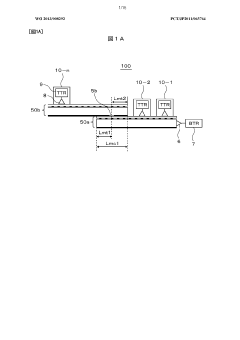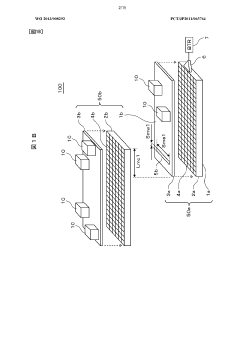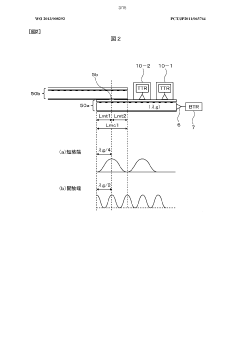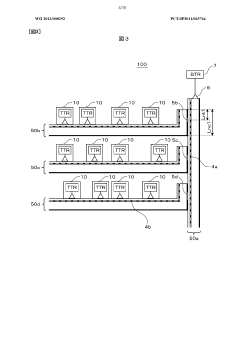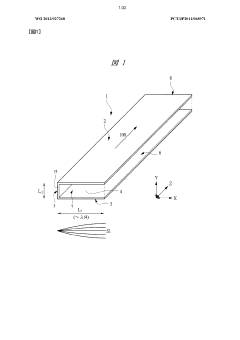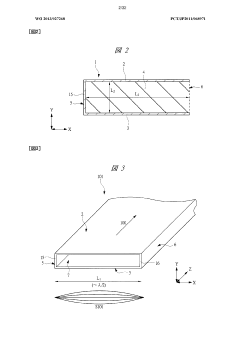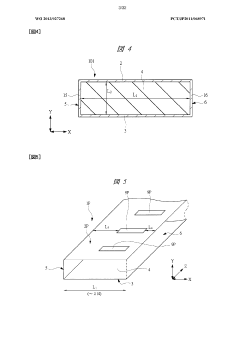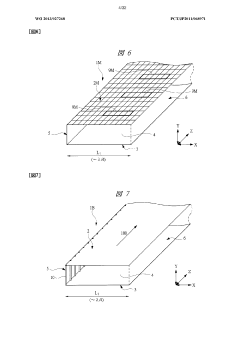How to Address Challenges in Electromagnetic Wave Propagation?
JUL 11, 202510 MIN READ
Generate Your Research Report Instantly with AI Agent
Patsnap Eureka helps you evaluate technical feasibility & market potential.
EM Wave Propagation Background and Objectives
Electromagnetic wave propagation has been a fundamental area of study in physics and engineering since the late 19th century. The field has evolved significantly, from Maxwell's equations to modern applications in wireless communications, radar systems, and remote sensing. As technology advances, the challenges in EM wave propagation have become increasingly complex, necessitating innovative solutions to meet the demands of emerging technologies.
The primary objective in addressing challenges in electromagnetic wave propagation is to enhance the efficiency, reliability, and performance of various systems that rely on EM waves. This includes improving signal quality, increasing data transmission rates, extending communication range, and mitigating interference in wireless networks. Additionally, there is a growing need to develop solutions for propagation in challenging environments, such as urban areas with high building density, underground structures, and through various atmospheric conditions.
One of the key trends in EM wave propagation research is the exploration of higher frequency bands, particularly in the millimeter-wave and terahertz ranges. These frequencies offer the potential for higher data rates and increased bandwidth, crucial for next-generation communication systems like 5G and beyond. However, they also present unique propagation challenges, including increased atmospheric absorption and sensitivity to obstacles.
Another significant focus is on adaptive and intelligent propagation techniques. These involve the development of smart antennas, beamforming technologies, and cognitive radio systems that can dynamically adjust to changing propagation environments. Such advancements aim to optimize spectrum usage and improve overall system performance in complex, multi-user scenarios.
The integration of artificial intelligence and machine learning algorithms into EM wave propagation models is an emerging trend. These techniques promise more accurate prediction of wave behavior in diverse environments, enabling better system design and real-time optimization of wireless networks. This approach is particularly valuable in addressing the challenges posed by the increasing complexity of modern communication systems and the heterogeneity of propagation environments.
As we look towards future developments, the field of EM wave propagation is likely to see continued innovation in areas such as metamaterials for controlling wave propagation, quantum communication techniques, and advanced signal processing methods. These developments will be crucial in addressing the ever-growing demands for faster, more reliable, and more secure communication systems across various applications, from consumer electronics to industrial IoT and beyond.
The primary objective in addressing challenges in electromagnetic wave propagation is to enhance the efficiency, reliability, and performance of various systems that rely on EM waves. This includes improving signal quality, increasing data transmission rates, extending communication range, and mitigating interference in wireless networks. Additionally, there is a growing need to develop solutions for propagation in challenging environments, such as urban areas with high building density, underground structures, and through various atmospheric conditions.
One of the key trends in EM wave propagation research is the exploration of higher frequency bands, particularly in the millimeter-wave and terahertz ranges. These frequencies offer the potential for higher data rates and increased bandwidth, crucial for next-generation communication systems like 5G and beyond. However, they also present unique propagation challenges, including increased atmospheric absorption and sensitivity to obstacles.
Another significant focus is on adaptive and intelligent propagation techniques. These involve the development of smart antennas, beamforming technologies, and cognitive radio systems that can dynamically adjust to changing propagation environments. Such advancements aim to optimize spectrum usage and improve overall system performance in complex, multi-user scenarios.
The integration of artificial intelligence and machine learning algorithms into EM wave propagation models is an emerging trend. These techniques promise more accurate prediction of wave behavior in diverse environments, enabling better system design and real-time optimization of wireless networks. This approach is particularly valuable in addressing the challenges posed by the increasing complexity of modern communication systems and the heterogeneity of propagation environments.
As we look towards future developments, the field of EM wave propagation is likely to see continued innovation in areas such as metamaterials for controlling wave propagation, quantum communication techniques, and advanced signal processing methods. These developments will be crucial in addressing the ever-growing demands for faster, more reliable, and more secure communication systems across various applications, from consumer electronics to industrial IoT and beyond.
Market Demand for EM Wave Solutions
The market demand for electromagnetic (EM) wave solutions has been steadily growing across various sectors, driven by the increasing need for efficient and reliable communication systems, advanced sensing technologies, and innovative applications in both civilian and military domains. This demand is particularly pronounced in the telecommunications industry, where the rollout of 5G networks and the anticipation of 6G technologies have created a surge in requirements for advanced EM wave propagation solutions.
In the telecommunications sector, the push for higher data rates, lower latency, and increased network capacity has led to a significant demand for solutions that can overcome the challenges associated with EM wave propagation in complex urban environments and at higher frequencies. This includes the development of advanced antenna systems, beamforming technologies, and innovative signal processing techniques to mitigate issues such as multipath fading, signal attenuation, and interference.
The aerospace and defense industries also represent a substantial market for EM wave solutions. There is a growing need for improved radar systems, electronic warfare capabilities, and secure communication technologies that can operate effectively in challenging electromagnetic environments. This has spurred research into adaptive antenna systems, cognitive radio technologies, and advanced signal processing algorithms to enhance the performance and reliability of military communication and sensing systems.
In the automotive sector, the rise of connected and autonomous vehicles has created a new market for EM wave solutions. These vehicles rely heavily on various sensors and communication systems that utilize electromagnetic waves, including radar, lidar, and vehicle-to-everything (V2X) communication technologies. As a result, there is an increasing demand for solutions that can ensure reliable and interference-free operation of these systems in diverse driving conditions and environments.
The Internet of Things (IoT) and smart city initiatives have also contributed significantly to the market demand for EM wave solutions. The proliferation of connected devices and sensors in urban environments requires robust and efficient wireless communication technologies that can operate reliably in dense and electromagnetically noisy settings. This has led to a growing interest in solutions that can optimize spectrum usage, improve energy efficiency, and enhance the overall performance of IoT networks.
Furthermore, the healthcare industry has emerged as a promising market for EM wave solutions, particularly in the field of medical imaging and non-invasive diagnostics. There is an increasing demand for advanced imaging technologies that can provide high-resolution, real-time insights into the human body while minimizing radiation exposure and invasiveness. This has driven research into novel EM-based imaging techniques and the development of sophisticated signal processing algorithms for medical applications.
As industries continue to evolve and adopt more advanced technologies, the market demand for innovative EM wave solutions is expected to grow further. This trend is likely to drive continued investment in research and development, fostering the creation of new technologies and applications that can address the complex challenges associated with electromagnetic wave propagation across various domains.
In the telecommunications sector, the push for higher data rates, lower latency, and increased network capacity has led to a significant demand for solutions that can overcome the challenges associated with EM wave propagation in complex urban environments and at higher frequencies. This includes the development of advanced antenna systems, beamforming technologies, and innovative signal processing techniques to mitigate issues such as multipath fading, signal attenuation, and interference.
The aerospace and defense industries also represent a substantial market for EM wave solutions. There is a growing need for improved radar systems, electronic warfare capabilities, and secure communication technologies that can operate effectively in challenging electromagnetic environments. This has spurred research into adaptive antenna systems, cognitive radio technologies, and advanced signal processing algorithms to enhance the performance and reliability of military communication and sensing systems.
In the automotive sector, the rise of connected and autonomous vehicles has created a new market for EM wave solutions. These vehicles rely heavily on various sensors and communication systems that utilize electromagnetic waves, including radar, lidar, and vehicle-to-everything (V2X) communication technologies. As a result, there is an increasing demand for solutions that can ensure reliable and interference-free operation of these systems in diverse driving conditions and environments.
The Internet of Things (IoT) and smart city initiatives have also contributed significantly to the market demand for EM wave solutions. The proliferation of connected devices and sensors in urban environments requires robust and efficient wireless communication technologies that can operate reliably in dense and electromagnetically noisy settings. This has led to a growing interest in solutions that can optimize spectrum usage, improve energy efficiency, and enhance the overall performance of IoT networks.
Furthermore, the healthcare industry has emerged as a promising market for EM wave solutions, particularly in the field of medical imaging and non-invasive diagnostics. There is an increasing demand for advanced imaging technologies that can provide high-resolution, real-time insights into the human body while minimizing radiation exposure and invasiveness. This has driven research into novel EM-based imaging techniques and the development of sophisticated signal processing algorithms for medical applications.
As industries continue to evolve and adopt more advanced technologies, the market demand for innovative EM wave solutions is expected to grow further. This trend is likely to drive continued investment in research and development, fostering the creation of new technologies and applications that can address the complex challenges associated with electromagnetic wave propagation across various domains.
Current Challenges in EM Wave Propagation
Electromagnetic wave propagation faces numerous challenges in modern applications, particularly in complex environments and emerging technologies. One of the primary obstacles is signal attenuation, which occurs as electromagnetic waves travel through various media. This phenomenon is especially pronounced in urban settings, where buildings, structures, and other obstacles can significantly weaken signal strength, leading to reduced coverage and communication quality.
Multipath propagation presents another significant challenge, particularly in densely populated areas. As electromagnetic waves reflect off surfaces and objects, they arrive at the receiver via multiple paths, causing interference and signal distortion. This effect can lead to fading, intersymbol interference, and reduced data transmission rates, impacting the overall performance of wireless communication systems.
The increasing demand for higher frequency bands, such as millimeter-wave (mmWave) frequencies for 5G and beyond, introduces new propagation challenges. These higher frequencies are more susceptible to atmospheric absorption, rain attenuation, and blockage by obstacles, limiting their effective range and reliability. Overcoming these limitations requires innovative antenna designs, beamforming techniques, and network architectures.
Electromagnetic interference (EMI) and electromagnetic compatibility (EMC) issues continue to pose significant challenges as the number of wireless devices and systems grows. The proliferation of electronic devices in close proximity can lead to unintended interactions and signal degradation, necessitating robust EMI/EMC management strategies and improved shielding techniques.
In the realm of indoor propagation, penetration loss through walls and floors remains a persistent challenge. This issue is particularly relevant for in-building wireless systems and IoT applications, where maintaining consistent signal strength across different rooms and levels is crucial for seamless connectivity.
The dynamic nature of propagation environments adds another layer of complexity. Factors such as moving objects, changing weather conditions, and varying user densities can significantly impact wave propagation characteristics. Developing adaptive systems that can respond to these dynamic conditions in real-time is an ongoing challenge in the field.
Lastly, the increasing focus on energy efficiency in wireless communications presents a unique challenge in electromagnetic wave propagation. Balancing the need for robust signal propagation with the imperative to minimize power consumption requires innovative approaches to antenna design, signal processing, and network optimization.
Multipath propagation presents another significant challenge, particularly in densely populated areas. As electromagnetic waves reflect off surfaces and objects, they arrive at the receiver via multiple paths, causing interference and signal distortion. This effect can lead to fading, intersymbol interference, and reduced data transmission rates, impacting the overall performance of wireless communication systems.
The increasing demand for higher frequency bands, such as millimeter-wave (mmWave) frequencies for 5G and beyond, introduces new propagation challenges. These higher frequencies are more susceptible to atmospheric absorption, rain attenuation, and blockage by obstacles, limiting their effective range and reliability. Overcoming these limitations requires innovative antenna designs, beamforming techniques, and network architectures.
Electromagnetic interference (EMI) and electromagnetic compatibility (EMC) issues continue to pose significant challenges as the number of wireless devices and systems grows. The proliferation of electronic devices in close proximity can lead to unintended interactions and signal degradation, necessitating robust EMI/EMC management strategies and improved shielding techniques.
In the realm of indoor propagation, penetration loss through walls and floors remains a persistent challenge. This issue is particularly relevant for in-building wireless systems and IoT applications, where maintaining consistent signal strength across different rooms and levels is crucial for seamless connectivity.
The dynamic nature of propagation environments adds another layer of complexity. Factors such as moving objects, changing weather conditions, and varying user densities can significantly impact wave propagation characteristics. Developing adaptive systems that can respond to these dynamic conditions in real-time is an ongoing challenge in the field.
Lastly, the increasing focus on energy efficiency in wireless communications presents a unique challenge in electromagnetic wave propagation. Balancing the need for robust signal propagation with the imperative to minimize power consumption requires innovative approaches to antenna design, signal processing, and network optimization.
Existing EM Wave Propagation Solutions
01 Antenna design for electromagnetic wave propagation
Various antenna designs are utilized to optimize electromagnetic wave propagation. These designs focus on improving signal strength, directionality, and efficiency in transmitting and receiving electromagnetic waves across different frequencies and environments.- Antenna design for electromagnetic wave propagation: Various antenna designs are utilized to optimize electromagnetic wave propagation. These designs focus on improving signal strength, directionality, and efficiency in different frequency ranges and applications. Advanced antenna configurations can enhance the transmission and reception of electromagnetic waves in wireless communication systems.
- Electromagnetic wave propagation in wireless networks: Techniques for managing electromagnetic wave propagation in wireless networks are developed to improve coverage, reduce interference, and optimize network performance. These methods involve adaptive beamforming, channel estimation, and multi-path propagation analysis to enhance signal quality and network capacity in various environments.
- Electromagnetic wave propagation modeling and simulation: Advanced modeling and simulation techniques are employed to predict and analyze electromagnetic wave propagation behavior. These methods help in understanding complex propagation phenomena, optimizing system designs, and improving the accuracy of wireless communication planning and deployment.
- Electromagnetic wave propagation in medical applications: Electromagnetic wave propagation is utilized in various medical applications, including imaging, diagnostics, and therapeutic treatments. These technologies leverage the interaction between electromagnetic waves and biological tissues to develop non-invasive medical procedures and improve patient care.
- Electromagnetic wave propagation in optical systems: Techniques for controlling and manipulating electromagnetic wave propagation in optical systems are developed to enhance performance in applications such as fiber optics, photonics, and optical sensing. These methods focus on improving signal transmission, reducing losses, and enabling advanced optical functionalities.
02 Electromagnetic wave propagation in wireless communication systems
Techniques for enhancing electromagnetic wave propagation in wireless communication systems are developed. These methods aim to improve signal quality, reduce interference, and increase coverage area in various wireless network configurations.Expand Specific Solutions03 Measurement and analysis of electromagnetic wave propagation
Advanced methods and systems for measuring and analyzing electromagnetic wave propagation characteristics are implemented. These techniques help in understanding wave behavior, predicting signal paths, and optimizing communication system performance.Expand Specific Solutions04 Electromagnetic wave propagation in specific environments
Studies and solutions for electromagnetic wave propagation in challenging environments such as underwater, underground, or through specific materials are developed. These approaches address unique propagation issues in these specialized contexts.Expand Specific Solutions05 Modeling and simulation of electromagnetic wave propagation
Advanced modeling and simulation techniques are employed to predict and analyze electromagnetic wave propagation. These computational methods aid in the design and optimization of communication systems and electromagnetic devices.Expand Specific Solutions
Key Players in EM Wave Industry
The electromagnetic wave propagation technology sector is in a mature stage, with a global market size estimated to be in the billions of dollars. Major players like Samsung Electronics, Huawei Technologies, and NEC Corporation are driving innovation in this field. The technology's maturity is evident in its widespread application across telecommunications, defense, and consumer electronics industries. Companies such as AGC Inc. and Hitachi Ltd. are focusing on developing advanced materials and components to enhance wave propagation efficiency. Research institutions like RIKEN and universities such as Harbin Institute of Technology are contributing to fundamental advancements in the field. The competitive landscape is characterized by a mix of established tech giants and specialized research entities, all working to address challenges in signal interference, material limitations, and energy efficiency in electromagnetic wave propagation.
Samsung Electronics Co., Ltd.
Technical Solution: Samsung has focused on developing comprehensive solutions for electromagnetic wave propagation challenges, particularly in mobile and IoT devices. Their approach includes advanced antenna designs, such as metamaterial-based antennas, which offer improved performance in compact form factors[4]. Samsung has also invested in developing proprietary RF chipsets that enhance signal processing and reduce power consumption in challenging propagation environments[5]. Furthermore, they have implemented machine learning algorithms for adaptive power control and channel estimation, improving overall system performance and energy efficiency in diverse electromagnetic environments[6].
Strengths: Vertical integration from chip design to device manufacturing, strong presence in consumer electronics. Weaknesses: Relatively newer player in network infrastructure compared to some competitors.
Huawei Technologies Co., Ltd.
Technical Solution: Huawei has developed advanced solutions to address electromagnetic wave propagation challenges, particularly in 5G networks. Their approach includes the use of Massive MIMO (Multiple-Input Multiple-Output) technology, which significantly improves signal strength and reduces interference in complex environments[1]. Huawei's 5G base stations employ adaptive beamforming techniques, allowing for dynamic adjustment of signal direction and power to overcome obstacles and multipath fading[2]. Additionally, they have implemented AI-driven algorithms for predictive channel modeling, enabling more efficient spectrum utilization and improved signal quality in various propagation scenarios[3].
Strengths: Strong R&D capabilities, leading position in 5G technology, and innovative AI-driven solutions. Weaknesses: Potential geopolitical challenges affecting global market access.
Core Innovations in EM Wave Propagation
Electromagnetic wave propagation path and electromagnetic wave propagation device
PatentWO2013008292A1
Innovation
- A planar electromagnetic wave propagation device utilizing overlapping planar conductors and dielectrics with electromagnetic wave coupling means, such as slots and mesh structures, allows for three-dimensional branching and expansion without physical attachment or exposure of electrodes, maintaining low leakage and high resistance to interference.
Electromagnetic wave propagation medium
PatentWO2013027268A1
Innovation
- The proposed electromagnetic wave propagation medium features a structure with conductors short-circuited on one side surface and open on the other, with specific distance configurations that allow for miniaturization and the inclusion of input/output interfaces, enabling efficient propagation and reduced size without increasing costs.
Regulatory Framework for EM Wave Technologies
The regulatory framework for electromagnetic (EM) wave technologies plays a crucial role in addressing the challenges of electromagnetic wave propagation. As the use of EM wave-based technologies continues to expand across various sectors, governments and international bodies have established comprehensive regulations to ensure safe and efficient utilization of the electromagnetic spectrum.
At the international level, the International Telecommunication Union (ITU) serves as the primary regulatory body for global radio frequency allocation and management. The ITU's Radio Regulations provide a framework for the allocation of frequency bands and the coordination of satellite orbits. These regulations are periodically updated through World Radiocommunication Conferences (WRCs) to address emerging technologies and changing spectrum needs.
National regulatory agencies, such as the Federal Communications Commission (FCC) in the United States and the Office of Communications (Ofcom) in the United Kingdom, are responsible for implementing and enforcing EM wave regulations within their respective jurisdictions. These agencies oversee spectrum allocation, licensing, and compliance with technical standards to minimize interference and ensure efficient use of the electromagnetic spectrum.
One of the key aspects of the regulatory framework is the establishment of electromagnetic compatibility (EMC) standards. These standards define the limits for electromagnetic emissions from electronic devices and systems, as well as their immunity to external electromagnetic interference. Organizations like the International Electrotechnical Commission (IEC) and the European Committee for Electrotechnical Standardization (CENELEC) develop and maintain EMC standards that are widely adopted globally.
The regulatory framework also addresses health and safety concerns related to electromagnetic radiation exposure. Guidelines and standards, such as those developed by the International Commission on Non-Ionizing Radiation Protection (ICNIRP), set limits on human exposure to electromagnetic fields. These guidelines are often incorporated into national regulations and are particularly relevant for technologies like mobile communications and wireless power transfer.
As new technologies emerge, regulatory frameworks must evolve to address novel challenges in electromagnetic wave propagation. For instance, the deployment of 5G networks has prompted regulators to reassess spectrum allocation and develop new guidelines for small cell installations. Similarly, the increasing use of unmanned aerial vehicles (UAVs) has led to the development of regulations governing their use of radio frequencies for communication and control.
The regulatory framework also plays a crucial role in promoting innovation and competition in EM wave technologies. By establishing clear rules for spectrum access and usage, regulators can create an environment that encourages the development of new wireless technologies and services. This includes mechanisms such as spectrum sharing, dynamic spectrum access, and the allocation of unlicensed bands for emerging applications.
At the international level, the International Telecommunication Union (ITU) serves as the primary regulatory body for global radio frequency allocation and management. The ITU's Radio Regulations provide a framework for the allocation of frequency bands and the coordination of satellite orbits. These regulations are periodically updated through World Radiocommunication Conferences (WRCs) to address emerging technologies and changing spectrum needs.
National regulatory agencies, such as the Federal Communications Commission (FCC) in the United States and the Office of Communications (Ofcom) in the United Kingdom, are responsible for implementing and enforcing EM wave regulations within their respective jurisdictions. These agencies oversee spectrum allocation, licensing, and compliance with technical standards to minimize interference and ensure efficient use of the electromagnetic spectrum.
One of the key aspects of the regulatory framework is the establishment of electromagnetic compatibility (EMC) standards. These standards define the limits for electromagnetic emissions from electronic devices and systems, as well as their immunity to external electromagnetic interference. Organizations like the International Electrotechnical Commission (IEC) and the European Committee for Electrotechnical Standardization (CENELEC) develop and maintain EMC standards that are widely adopted globally.
The regulatory framework also addresses health and safety concerns related to electromagnetic radiation exposure. Guidelines and standards, such as those developed by the International Commission on Non-Ionizing Radiation Protection (ICNIRP), set limits on human exposure to electromagnetic fields. These guidelines are often incorporated into national regulations and are particularly relevant for technologies like mobile communications and wireless power transfer.
As new technologies emerge, regulatory frameworks must evolve to address novel challenges in electromagnetic wave propagation. For instance, the deployment of 5G networks has prompted regulators to reassess spectrum allocation and develop new guidelines for small cell installations. Similarly, the increasing use of unmanned aerial vehicles (UAVs) has led to the development of regulations governing their use of radio frequencies for communication and control.
The regulatory framework also plays a crucial role in promoting innovation and competition in EM wave technologies. By establishing clear rules for spectrum access and usage, regulators can create an environment that encourages the development of new wireless technologies and services. This includes mechanisms such as spectrum sharing, dynamic spectrum access, and the allocation of unlicensed bands for emerging applications.
Environmental Impact of EM Wave Solutions
The environmental impact of electromagnetic (EM) wave solutions is a critical consideration in addressing challenges in EM wave propagation. As technologies relying on EM waves continue to proliferate, their potential effects on the environment have become increasingly important to assess and mitigate.
One of the primary environmental concerns associated with EM wave solutions is the potential impact on wildlife and ecosystems. Studies have shown that certain frequencies of EM radiation can affect the behavior and navigation of various animal species, particularly birds and insects. For instance, research has indicated that high-frequency EM waves may interfere with the magnetic sense that some migratory birds use for navigation, potentially disrupting their migration patterns and breeding cycles.
Additionally, the proliferation of wireless communication infrastructure, such as cell towers and satellite networks, has raised concerns about habitat fragmentation and visual pollution. The construction of these structures can lead to the destruction of natural habitats and alter landscapes, potentially affecting local ecosystems and biodiversity.
Another significant environmental consideration is the energy consumption associated with EM wave technologies. As the demand for wireless communication and data transmission grows, so does the energy required to power the necessary infrastructure. This increased energy consumption contributes to greenhouse gas emissions and places additional strain on power grids, particularly in areas where renewable energy sources are not readily available.
Electromagnetic pollution, or electrosmog, is another environmental issue that has gained attention in recent years. While the long-term effects of low-level EM radiation on human health and the environment are still being studied, there is growing concern about the cumulative impact of multiple EM sources in urban environments.
To address these environmental challenges, researchers and engineers are exploring various solutions. One approach involves developing more energy-efficient EM wave technologies, such as advanced antenna designs and smart power management systems. These innovations aim to reduce the overall energy consumption of wireless networks while maintaining or improving performance.
Another area of focus is the development of environmentally friendly materials for EM wave applications. For example, researchers are investigating biodegradable substrates for printed circuit boards and antennas, which could help reduce electronic waste and minimize the environmental impact of discarded devices.
Furthermore, efforts are being made to optimize the placement and design of EM infrastructure to minimize its impact on wildlife and ecosystems. This includes using existing structures for antenna placement, implementing wildlife-friendly designs for communication towers, and conducting thorough environmental impact assessments before deploying new EM wave solutions.
As the field of EM wave propagation continues to evolve, it is crucial to maintain a balance between technological advancement and environmental stewardship. By addressing these environmental concerns proactively, researchers and industry leaders can work towards developing sustainable EM wave solutions that minimize negative impacts on the planet while meeting the growing demands of our interconnected world.
One of the primary environmental concerns associated with EM wave solutions is the potential impact on wildlife and ecosystems. Studies have shown that certain frequencies of EM radiation can affect the behavior and navigation of various animal species, particularly birds and insects. For instance, research has indicated that high-frequency EM waves may interfere with the magnetic sense that some migratory birds use for navigation, potentially disrupting their migration patterns and breeding cycles.
Additionally, the proliferation of wireless communication infrastructure, such as cell towers and satellite networks, has raised concerns about habitat fragmentation and visual pollution. The construction of these structures can lead to the destruction of natural habitats and alter landscapes, potentially affecting local ecosystems and biodiversity.
Another significant environmental consideration is the energy consumption associated with EM wave technologies. As the demand for wireless communication and data transmission grows, so does the energy required to power the necessary infrastructure. This increased energy consumption contributes to greenhouse gas emissions and places additional strain on power grids, particularly in areas where renewable energy sources are not readily available.
Electromagnetic pollution, or electrosmog, is another environmental issue that has gained attention in recent years. While the long-term effects of low-level EM radiation on human health and the environment are still being studied, there is growing concern about the cumulative impact of multiple EM sources in urban environments.
To address these environmental challenges, researchers and engineers are exploring various solutions. One approach involves developing more energy-efficient EM wave technologies, such as advanced antenna designs and smart power management systems. These innovations aim to reduce the overall energy consumption of wireless networks while maintaining or improving performance.
Another area of focus is the development of environmentally friendly materials for EM wave applications. For example, researchers are investigating biodegradable substrates for printed circuit boards and antennas, which could help reduce electronic waste and minimize the environmental impact of discarded devices.
Furthermore, efforts are being made to optimize the placement and design of EM infrastructure to minimize its impact on wildlife and ecosystems. This includes using existing structures for antenna placement, implementing wildlife-friendly designs for communication towers, and conducting thorough environmental impact assessments before deploying new EM wave solutions.
As the field of EM wave propagation continues to evolve, it is crucial to maintain a balance between technological advancement and environmental stewardship. By addressing these environmental concerns proactively, researchers and industry leaders can work towards developing sustainable EM wave solutions that minimize negative impacts on the planet while meeting the growing demands of our interconnected world.
Unlock deeper insights with Patsnap Eureka Quick Research — get a full tech report to explore trends and direct your research. Try now!
Generate Your Research Report Instantly with AI Agent
Supercharge your innovation with Patsnap Eureka AI Agent Platform!
